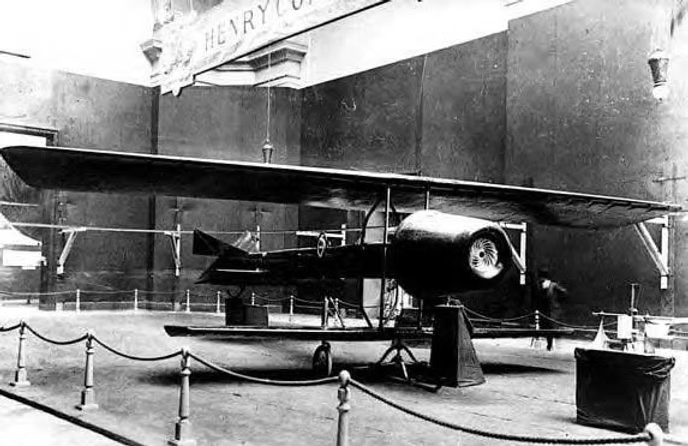Originally published on LAWinSPACE.com, July 14, 2025, marking the 249th anniversary of the adoption of the Declaration of Independence (1776) by the .U.S.A.
The real voyage of discovery consists not in seeking new landscapes, but in having new eyes.
- Marcel Proust
Reframed through a STEM lens, it urges re-viewing aerospace threats as opportunities, much like turning debris into data.
Hello Romanian space pioneers and global cosmic visionaries! Our weekly space law digest is here, and it's summer-hot. Here’re our distilled picks of the most impactful aerospace developments from the past week (No. 28), focusing on advancements in satellites, defense, drones, and related STEM fields, and tackling the escalating drone dominance in warfare, satellite proliferation for security, and policy imperatives for European resilience. Each story comes with a Romania-specific takeaway, packed with actionable ideas for our vibrant aerospace and defense community.
U.S. Defense Secretary Pete Hegseth Unveils Sweeping Drone Strategy Overhaul
In a high-profile Pentagon video release on July 10, featuring dramatic visuals and Metallica's "Enter Sandman," Secretary Hegseth ordered an accelerated modernization of U.S. drone capabilities. The directive emphasizes expanded production, regulatory streamlining, and innovation to counter emerging threats from adversaries like China and Russia. This includes shifting management of the "Blue UAS" secure drone list to the Defense Contract Management Agency (DCMA) for broader deployment. Amid reports of China declaring readiness for a "drone war" with the U.S., the strategy signals a pivot toward hemispheric defense, integrating unmanned systems into core military operations.
Mararu & Mararu's Views on Romania Key Takeaways: Romania's aerospace sector should prioritize synergies with U.S. partners through NATO frameworks, such as joint drone R&D under the Strategic Airlift Capability (SAC) program (https://www.sacprogram.org/default). Pragmatically, Romanian firms like Aerostar could pursue subcontracts for drone components, leveraging tax incentives from the Romanian National Defense Industry Strategy for 2024–2030.
We would also recommend urgent advocacy for EU-NATO funding venues like the European Defence Fund (EDF) to co-develop counter-drone tech, fostering partnerships with U.S. entities like AeroVironment (https://www.avinc.com). This could address HR needs by training 500+ specialists via STEM programs at Politehnica University, positioning Romania as a SEE hub for drone defense solutions.
Boeing Secures $2.8 Billion Contract for Next-Generation Secure Satellites
On July 7, Boeing was awarded a $2.8 billion U.S. Department of Defense contract to develop advanced secure communications satellites, replacing outdated systems with resilient, jam-resistant platforms. This follows a week of satellite-related disruptions, including NOAA's abrupt loss of contact with key weather satellites like the Defense Meteorological Satellite Program (DMSP) before severe Texas floods, underscoring vulnerabilities in space infrastructure.
Mararu & Mararu's Views on Romania Key Takeaways: As an EU member with growing satellite ambitions via the Romanian Space Agency (ROSA), Romania should explore technology transfer partnerships with Boeing through ESA's ARTES program. Strategically, this opens market opportunities for Romanian SMEs in satellite ground segments, backed by patent incentives under the National R&D Plan 2022–2027 (where the key backing comes from reward systems, funding vouchers, and outcome metrics that incentivize patenting).
An urgent policy alignment with EU space debris regulations is in order, to attract financing from the Horizon Europe fund, potentially creating 200 jobs in Cluj-Napoca's tech cluster and synergies with SEE neighbors like Bulgaria (e.g., for joint orbital mining feasibility studies).
Russia Deploys Record 700+ Drone and Missile Attack on Ukraine
On July 9, Russia executed its largest aerial assault in months, launching over 740 drones (including Geran-2 kamikaze models) and missiles in an 11-hour barrage targeting Ukrainian airfields like Lutsk. Ukrainian defenses claimed high interception rates, but hypersonic Kinzhal missiles penetrated, destroying suspected munitions depots. This tactic aims to exhaust air defenses, highlighting drones' role in modern attrition warfare.
Mararu & Mararu's Views on Romania Key Takeaways: Bordering Ukraine, Romania faces heightened debris and incursion risks, necessitating immediate investment in integrated air defense networks. Practically, the following high-value takeaways come into mind: collaborating with Ukraine on drone forensics research via bilateral STEM initiatives, and urging EU legislation for shared debris mitigation funds. Calls to action include partnering with Rafael Advanced Defense Systems for localized drone production, addressing policy gaps in airspace sovereignty, and financing via the Permanent Structured Cooperation (PESCO) - https://www.pesco.europa.eu - to build resilience, potentially yielding patents in AI-driven threat detection for the SEE region.
Netherlands to Deploy High-Resolution Iceye SAR Satellites for Defense
Announced July 10 in Aviation Week, the Netherlands will field four Iceye synthetic aperture radar (SAR) satellites, enhancing surveillance amid rising geopolitical tensions. This Finnish collaboration bolsters NATO's space-based intelligence, focusing on maritime and border monitoring.
Mararu & Mararu's Views on Romania Key Takeaways: Romania could leverage this as a model for its own SAR satellite ambitions under ROSA's 2025–2030 strategy, seeking synergies with Dutch firms via ESA's Copernicus program. Strategically, we believe joint ventures for data analytics, tapping EU tax breaks for aerospace R&D are highly recommended. This presents HR opportunities through cross-border training, urging calls to action at UN COPUOS forums for debris standards, and fostering partnerships to position Romania as an EU gateway for SEE satellite services.
Airbus Provides Updates on FCAS, UAVs, and Satellites Amid Leadership Changes
At the tail end of Paris Air Show reflections (reported July 8), Airbus highlighted progress on the Future Combat Air System (FCAS), emphasizing multirole UAVs and satellite integration for European defense. Concurrently, CTO Sabine Klauke's departure signals a shift toward digital manufacturing.
Mararu & Mararu's Views on Romania Key Takeaways: As a potential FCAS participant via its Airbus Helicopters plant in Brașov, Romania should push for inclusion in Phase 1B, advocating policy harmonization with EU defense directives. Pragmatically, this enables technology patents in UAV avionics, with financing from the European Investment Bank. We would recommend strategic alliances with Airbus for STEM education hubs, addressing urgencies in supply chain localization and creating synergies for SEE aviation markets.
Top Romanian Aerospace Stories
Romania Acquires $5.6 Billion Israeli Air Defense Systems Amid Drone Threats
On July 10, Romania announced a major deal for 41 Israeli systems ($5.6B), including 24 Iron Dome and 17 Spyder batteries, equipped with Tamir interceptors, EL/M-2084 radar, and command units to strengthen our SHORAD (Short-Range Air Defense) and VSHORAD (Very Short-Range Air Defense) capabilities, including to counter Russian drone incursions, making Romania the first European country to integrate this battle-proven short-range air defense solution. This follows wreckage discoveries and radar detections of breaches, with contracts slated for fall signing.
This bolsters the domestic defense industry, urging public-private partnerships like those with ROMARM for local assembly. Strategically, Romania should integrate with EU PESCO projects for joint procurement, addressing HR needs via aerospace engineering programs with Romanian STEM universities (Bucuresti, Cluj-Napoca, Iasi, Timisoara etc.). We would also like to see tax reforms are also being made to incentivize R&D, fostering synergies with Israeli firms for patent co-development and SEE export markets.
Russian Drone Wreckage Found in Romania, Prompting Airspace Security Debates
July 11 reports confirmed Russian drone fragments near the Litcov Channel (Danube Delta’s longest channel), echoing prior breaches and amplifying calls for enhanced border surveillance.
This highlights an urgency in debris management, recommending ROSA-led research into orbital and aerial tracking tech. Practically, we should pursue EU funding for drone neutralization patents, with calls to action at NATO summits for shared intelligence. This could spur HR growth in Romania’s tech sector, enabling partnerships with Ukrainians abroad for cross-border solutions.
Romanian Radar Detects Multiple Drone Incursions, Bolstering Shoot-Down Legislation
Radar systems logged two drone signals violating Romania’s airspace July 5–6, reinforcing February's law allowing intercepts and underscoring Romania's frontline NATO role.
We should leverage this for strategic EU advocacy on unified airspace policies, urging financing from the EDF for advanced radar upgrades. We could also suggest synergies with Romanian diaspora engineers (e.g., in U.S./EU firms) for STEM collaborations, addressing market needs in aviation security and potential venues like the UN Space Conference.
Drone Attacks Trend (2024-2025)
Jul 2024: |||||| (300)
Jan 2025: |||||||||| (500)
Jul 2025: |||||||||||||||||| (740+)
[Scale: Each | = 50 drones; Source: Aggregated reports]
Upcoming Relevant Events
- EU: The Future of the European Defense Market (September 8, London) – Focus on aviation and drones; ideal for Romanian policy advocacy.
- US: Global Aerospace Summit (September 9–11, Washington, D.C.) – Opportunities for partnerships in satellites and defense.
- UN: Outer Space Security Conference (September 9–10, Geneva) – Address debris and mining; Romania should present on border threats.
This Week in STEM History
- July 5, 1917: First flight of the Fokker Dr.I triplane, revolutionizing WWI aerial combat and inspiring modern agile drone designs.
- July 6, 1954: Debut of the Transcendental Model 1-G, an early tiltrotor prototype that laid groundwork for today's hybrid UAVs.
- July 10, 1962: Launch of Telstar 1, the first active communications satellite, pioneering global telecom and EU space collaboration.
- July 11, 1979: Skylab's reentry over Australia, highlighting early debris challenges and informing current international regulations (https://www.nasa.gov/history/45-years-ago-skylab-reenters-earths-atmosphere/).




.svg)



